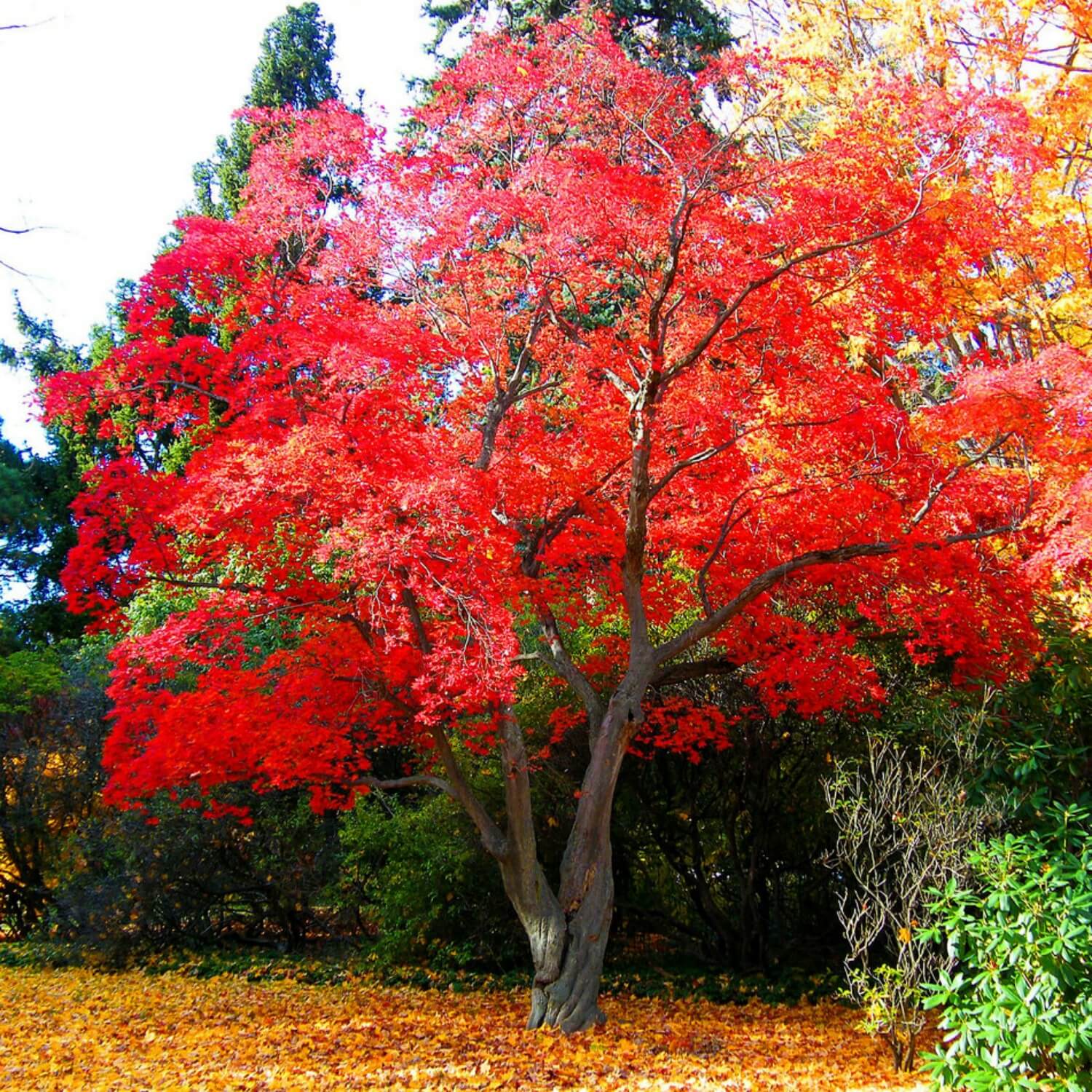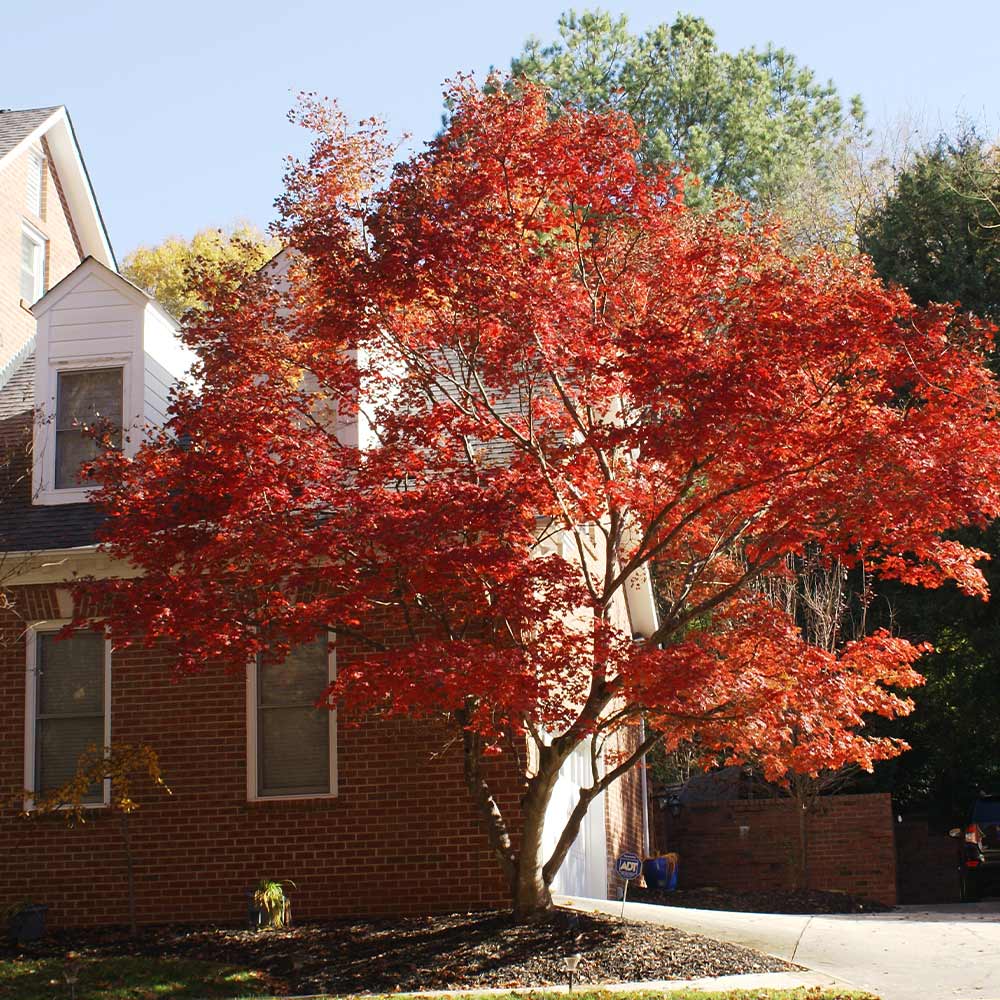

Protection from Strong Wind - The foliage of Japanese Maples is quite fragile, drying out quickly in high winds.

Your Japanese Maple will be very forgivingbut cut a very wide and deep hole around it and leave as much soil clinging to its roots as you can when you dig it up. The best time to move the tree is in late summer or early fall, at least a month before the ground freezes. Location is one of the most important factors in growing this tree successfully, so a bit of trial-and-error may be in order. If after a year or two your Japanese Maple does not seem ideally situated in your garden, don't be afraid to dig up it up and move it. (But this could also be an indication of overwatering in late summer and early fall, which will cause the tree to keep producing new green leaves in autumn instead of changing colors as it should.) If the fall foliage isn't nearly as dramatic as expected, it may be getting too much shade. If you notice its leaves scorching during the summer, it's probably overexposed to sun. It does need some sun for best foliage color, but the amount you give it can vary greatly.
Red maple tree full#
Protection from late spring frosts, especially when youngĭappled or Afternoon Shade - A mature Japanese Maple thrives in full sun everywhere but the southernmost portions of its hardiness range, but is also happy with a bit more shade.Well-drained, consistently moist soil, neither excessively wet nor dry.Dappled or afternoon shade, especially when young.Inherently an elegant tree, in the modern garden Japanese Maple may find themselves among shade-loving perennials or even cheery annuals-and why not? They are superb season-extenders for all summer-interest plantings, and offer much-needed dappled shade to understory plantings three seasons of the year.īelow is a brief overview of the ideal conditions for growing Japanese Maple, followed by some detailed recommendations. These offer a moveable display of color on a miniature scale, their exquisitely divided foliage available for close inspection. Many varieties of Japanese Maple are dwarf enough to be grown in containers and even as bonsai. And in a large planting along a walk, driveway, or slope, it creates a ribbon of color brighter and more attractive than the most beautiful lights. As an accent in the border, it draws the eye to its blazing canopy of color, enlivening an area that might otherwise be dull in autumn. For more information, please see the article on the Differences Between Hard Maple and Soft Maple.Few plants can equal the beauty and command of a Japanese Maple in the autumn landscape.Īs a solitary specimen it is breathtaking, its fall foliage remaining for weeks, then falling into a brilliant pool of crimson, orange, or gold on the garden floor. Red maple is common over a very large area of the eastern Untied States, and its wood tends to be slightly heavier, stronger, and harder than other species in the grouping of soft maples, though it is still not as strong as hard maple. Sustainability: This wood species is not listed in the CITES Appendices or on the IUCN Red List of Threatened Species.Ĭommon Uses: Veneer, paper (pulpwood), boxes, crates/pallets, musical instruments, turned objects, and other small specialty wood items.Ĭomments: Red maple is appropriately named, as its flowers, twigs, seeds, and autumn leaves ( shown below) are all red. Pricing/Availability: Should be very moderately priced, though figured pieces such as curly or quilted grain patterns are likely to be much more expensive. See the articles Wood Allergies and Toxicity and Wood Dust Safety for more information.
Red maple tree skin#
Turns, glues, and finishes well, though blotches can occur when staining, and a pre-conditioner, gel stain, or toner may be necessary to get an even color.Īllergies/Toxicity: Red maple, along with other maples in the Acer genus, have been reported to cause skin irritation, runny nose, and asthma-like respiratory effects. Workability: Fairly easy to work with both hand and machine tools, though maple has a tendency to burn when being machined with high-speed cutters such as in a router. Rot Resistance:Rated as non-durable to perishable in regard to decay resistance. The growth rings tend to be lighter and less distinct in soft maples than in hard maple. Grain/Texture:Grain is generally straight, but may be wavy. Red maple can also be seen with curly or quilted grain patterns.

Sapwood color ranges from almost white, to a light golden or reddish brown, while the heartwood is a darker reddish brown.

Color/Appearance: Unlike most other hardwoods, the sapwood of maple lumber is most commonly used rather than its heartwood.


 0 kommentar(er)
0 kommentar(er)
